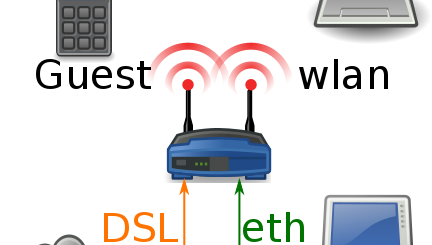Optimizing your WiFi’s DTIM Interval
Most wireless routers (especially the higher-end devices) allow you to change the DTIM interval in a menu for advanced wireless settings. This article will help you understand the DTIM interval.
DTIM is a multiplier of the beacon interval. The beacon interval is the time (ms) between beacons which contain information about the network and synchronize the wireless network. The DTIM is sent every n beacons and contains queued multicast information. Multicast data is data which is sent to multiple devices on the network simultaneously (as opposed to several separate data streams for each device).
The default beacon interval for many home wireless routers is 100ms, and the default DTIM interval is 1. Therefore, Delivery traffic indication messages are sent with every beacon.
Why is this significant? Many mobile devices will enter Power Save Mode when they’re sleeping on a wireless network (laptops, smartphones, etc.), and one of the specifications of Power Save Mode allows devices to sleep during and ignore non-DTIM beacons, and only listen to the DTIM beacons. The wireless router will queue up multicast traffic and send it with the DTIM.
A DTIM interval of 1 and beacon interval of 100 will cause devices in power-save mode to wake as often as they would with a DTIM interval of 2 and a beacon interval of 50.
A shorter beacon interval causes wireless devices to connect to a wireless network faster, but creates more wireless traffic which decreases wireless performance as there is less time during which useful data can be transferred to-and-from the router. A longer beacon interval can cause wireless clients to drop connectivity and the network may get out-of-sync if too many wireless clients are connected, but performance may be increased.
A longer DTIM interval can help improve battery life for mobile devices as they can remain sleeping for longer, but a router’s multicast buffer may overflow, and time-sensitive data may be delayed.



